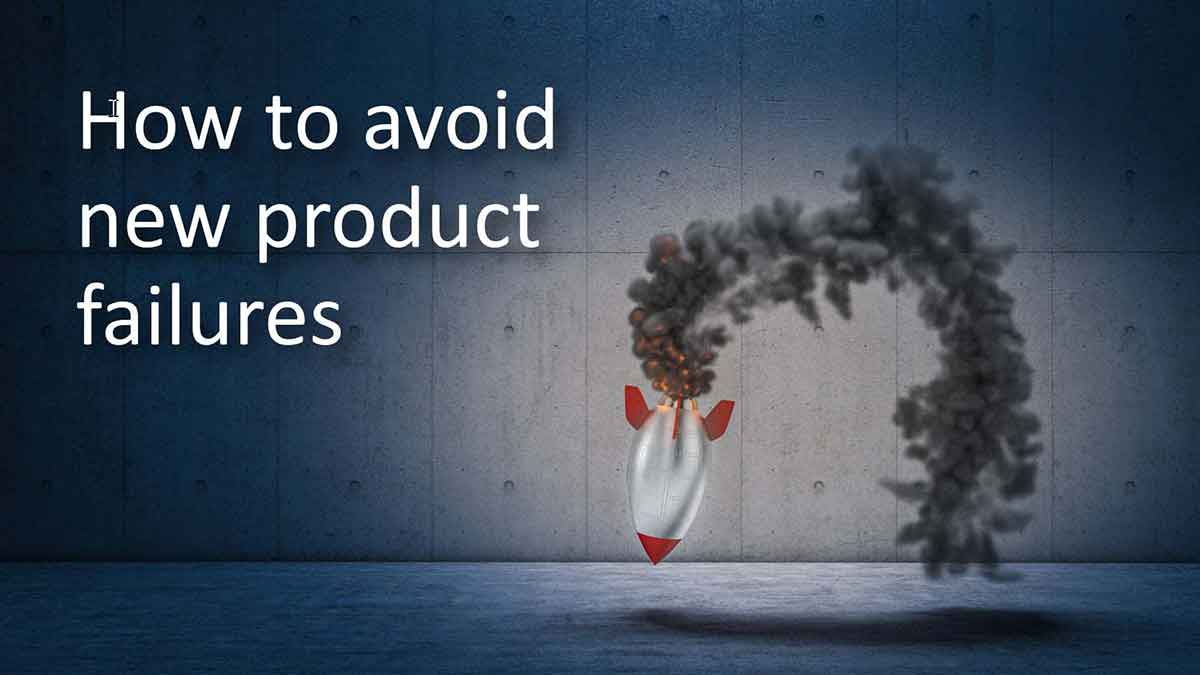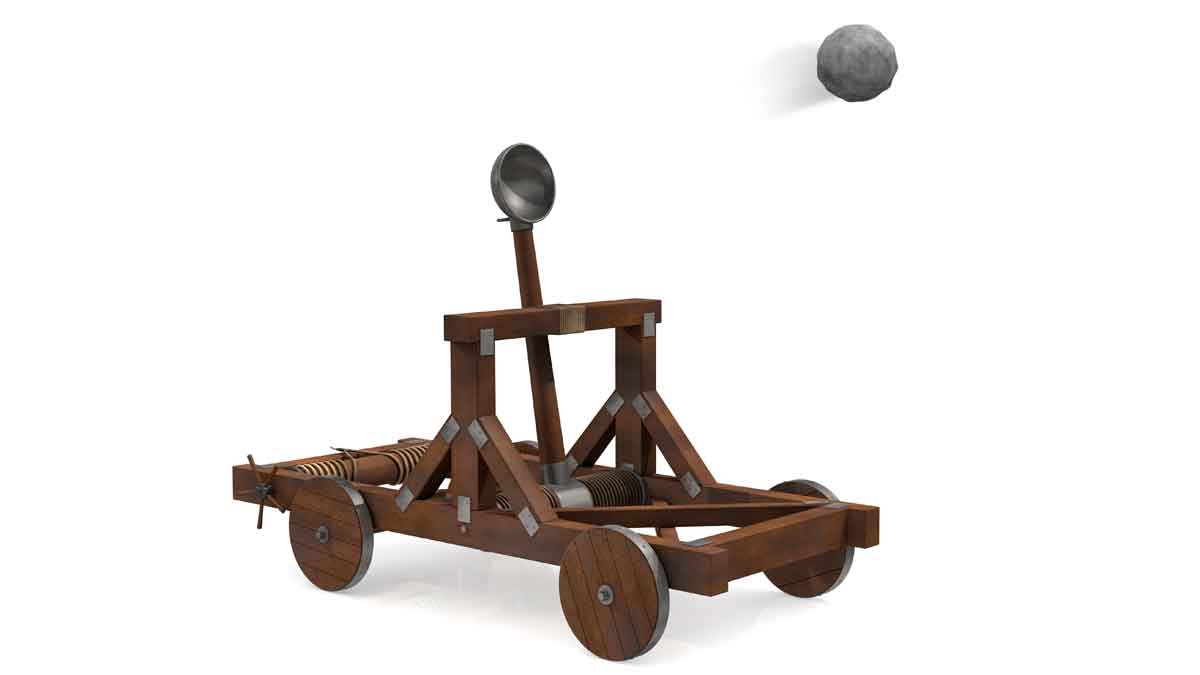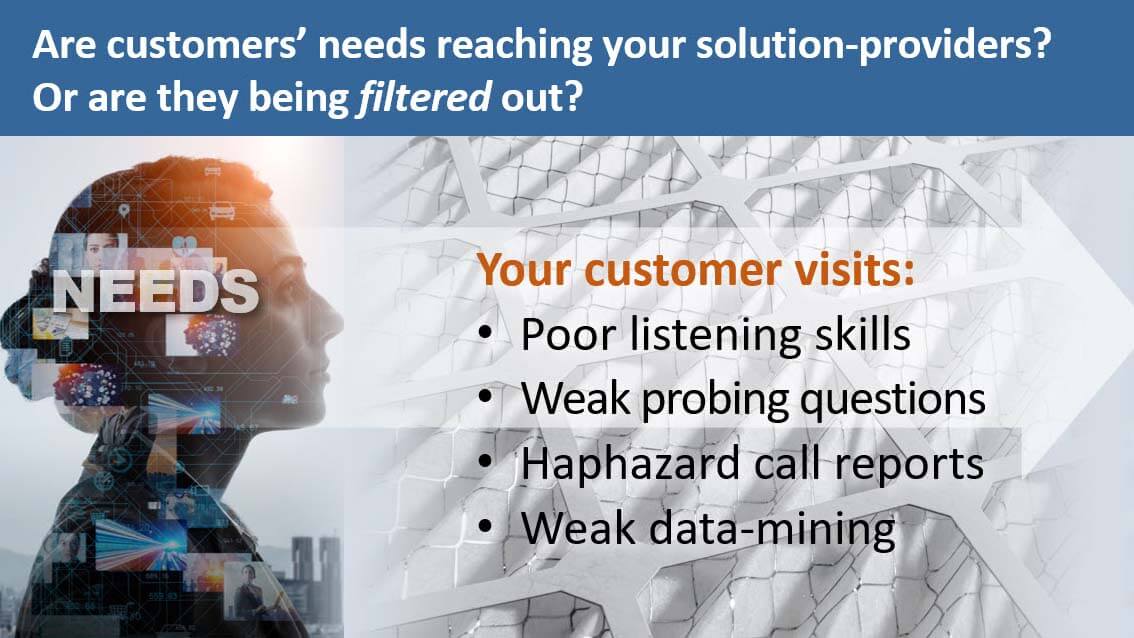Where else do you invest tens of millions of dollars in personnel, so that many can work diligently on answers to the wrong questions? If your firm is like most, one-half of your product development resources are working on projects that will be cancelled or fail to yield an adequate return. You can stop this innovation malpractice with the science of B2B customer insight. Specifically, you must stop projects from entering the development stage unless you have data-driven evidence of customer needs.
More in 2-minute video at 35. Insist on data-driven innovation
In concentrated B2B markets, the top ten buying accounts may represent 50-100% of the buying potential. Unlike B2C—with deep pools of potential prototype testers—B2B suppliers can wear out their welcome by lobbing sloppy “minimum viable products.” If you use Lean Startup, be sure to begin with proper B2B customer interviews.
More in white paper, www.leanstartupforb2b.com (page 7)
Tired of new product failures? Get one simple step right and your new product success rates will soar. For B2B companies, this step is prioritizing customers’ needs. Not sure about that? We’ll show you strong evidence that supports this… and show you how to turn new product failures into rare and distant memories. What’s more ... Read More
Years from now, we’ll think it quite strange that B2B companies explored market needs by launching products to see if anyone would buy them. In the future, B2B companies will have a complete understanding of market needs before they begin developing their products, let alone launch them. Want to start before your competitors?
More in white paper, www.b2btimingiseverything.com (page 5)
It’s natural to ruminate on the future; in particular, about technology adoption. What changes will future technology waves bring? Will we ride them to riches or drown under the weight of disruption? A Danish proverb warns that “Prediction is dangerous, especially about the future.” A cycle of bad logic Unfortunately, when we theorize, we can ... Read More
Every one of your B2B customers has needs… problems to be solved. What’s filtering them out, preventing your solution providers from understanding them? 1) Poor listening skills when your employees meet with them? 2) Few probing questions? 3) Haphazard call reports? 4) Weak CRM datamining? You can change all this when your customer-facing employees use Everyday VOC.
More in Everyday VOC white paper, www.EVOCpaper.com
Your “second objective” after customer insight should be customer engagement. These 9 approaches help: 1) Kill the questionnaire, 2) let customers lead, 3) discuss their “job-to-be-done,” 4) project your notes, 5) focus on customer outcomes, 6) probe… deeply, 7) don’t sell or solve, 8) get quantitative, and 9) use triggers. ... Read More
For new product success, it’s critical to continuously understand customer needs. There’s only one true path to do this well: Your company must develop the competency to interview customers, to gather and prioritize needs. But additionally, are there times when the best decision is outsourcing VOC projects? Yes, there will be. But first, let’s review ... Read More
Clever companies realize they’ll “hear what they want to hear” without quantitative VOC. To do it right, B2B companies should weight responses based on customer buying power. And don’t just ask for importance ratings: Ask for satisfaction ratings as well. The only hope for premium pricing is pursuing needs that are both important and unsatisfied. You can use something called Market Satisfaction Gaps to point you in the right direction.
More in white paper, www.marketsatisfactiongaps.com
Think your VOC work is done if you can splash some pithy customer quotes on a PowerPoint slide? Nope. You must conduct quantitative interviews to isolate the important, unsatisfied outcomes (using 1-10 scales). We all “hear what we want to hear”… so unfiltered customer data is needed. Never spend development dollars until someone “shows you the numbers.” The most important numbers are something called Market Satisfaction Gaps.
More white paper, www.marketsatisfactiongaps.com
Can Voice of the Customer methods be helpful for Sales? Consider the purpose of VOC – to understand customer needs for innovation. Could it be possible that these innovation methods could help sales as well? Let’s look at 11 VOC principles that will improve sales effectiveness. 1. Talk first; listen later. In today’s fast-paced world, ... Read More
Mediocre product teams ask the question, “How do we improve our product?” Good teams ask, “For what job does a customer hire our product?” But the elite teams additionally ask, “Who are we creating value for?” And to arrive at a proper answer, we must understand customer roles for JTBD (jobs-to-be-done). What are the Roles ... Read More
If your new product development process begins with “idea generation,” is it your idea… or your customers’? If you start with your idea, you probably won’t understand customer needs until the end… by seeing if they buy your new product. Why not flip your approach and start with customer needs? Unless you’d rather your R&D kept guessing at customer needs.
More in white paper, www.guessingatcustomerneeds.com
A persona is a hypothetical archetype used to represent customers in a given market segment. Follow 4 practices for B2B growth: 1) Design for just one person, 2) be specific, 3) remember precision is more important than accuracy, and 4) separate user personas from buyer personas. ... Read More













